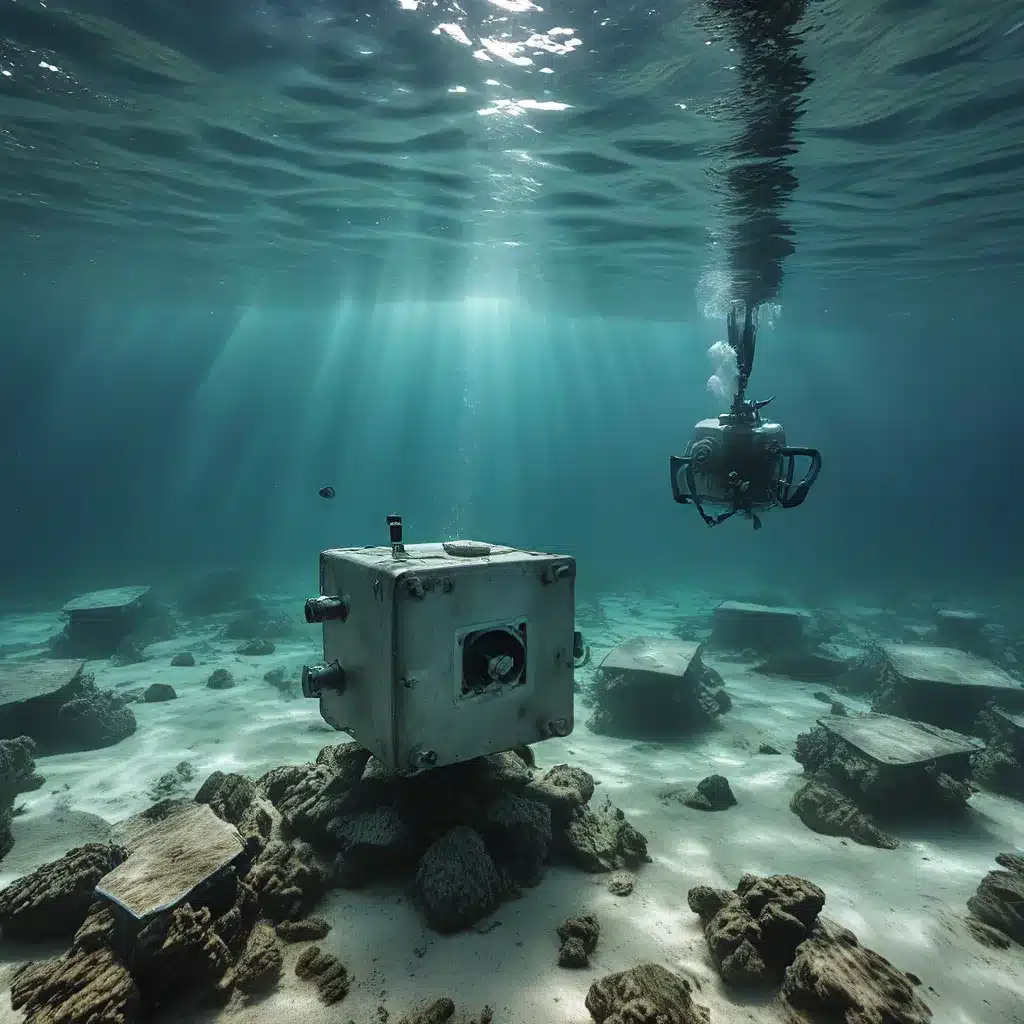
Navigating the Challenges of Underwater Sensor Networks
Underwater Wireless Sensor Networks (UWSNs) have emerged as a pivotal technology, enabling a wealth of applications in aquatic environments, from marine ecosystem monitoring to offshore infrastructure inspection. However, the unique challenges posed by the underwater domain, particularly the limited energy resources of sensor nodes, have become a critical concern for the longevity and performance of these networks.
One of the primary issues faced in UWSNs is the emergence of energy holes, where certain nodes deplete their energy reserves prematurely, leading to disruptions in data collection and communication. This phenomenon can have a cascading effect, compromising the overall network’s integrity and functionality. Addressing this challenge is crucial for ensuring the long-term viability and energy efficiency of underwater sensor deployments.
Leveraging Machine Learning for Intelligent Forecasting
In recent years, the application of machine learning techniques, particularly neural networks, has shown promising results in tackling the energy management challenges in UWSNs. By leveraging the power of data-driven predictive modeling, researchers have developed innovative solutions to forecast and mitigate the emergence of energy holes, paving the way for more sustainable and resilient underwater sensor networks.
Energy Hole Classification
The first step in this approach involves the classification of energy hole instances within the UWSN. Extensive simulations are conducted to generate a comprehensive dataset, capturing crucial factors such as residual energy, hop distance from the surface sink, and network-specific attributes like source and destination addresses. This dataset is meticulously preprocessed and curated to ensure its suitability for training a neural network model for energy hole classification.
By leveraging the power of neural networks, the model is able to identify patterns and dependencies among the various features, enabling accurate classification of energy hole occurrences. This information serves as a valuable foundation for the subsequent prediction phase.
Energy Hole Prediction
Building upon the insights gained from the classification model, researchers have developed predictive neural network models that can forecast the emergence of energy holes in UWSNs. These models are trained on the same dataset, with the goal of capturing the complex relationships between factors such as residual energy and hop distance, and their influence on potential energy hole formation.
The trained predictive model is then evaluated on a distinct test dataset, using metrics like accuracy, precision, recall, and F1 score to measure its performance in anticipating energy hole occurrences. The results showcase the model’s ability to generalize from the extensive dataset, providing invaluable insights into the potential energy hole locations and timelines within the underwater sensor network.
Enhancing Energy-Efficient Underwater Sensor Deployments
The neural network-based approach to energy hole classification and prediction offers a promising solution for improving the energy management and longevity of UWSNs. By leveraging this intelligence, network administrators and designers can make informed decisions about node placement, routing protocols, and energy harvesting strategies, ensuring the overall resilience and efficiency of the underwater sensor network.
Optimized Node Deployment
One of the key applications of the energy hole prediction model is in the strategic placement of sensor nodes within the underwater environment. By anticipating the locations and timelines of potential energy holes, network designers can deploy nodes in a more energy-efficient manner, ensuring that critical areas are covered and the overall network performance is maintained over an extended period.
Adaptive Routing Protocols
In addition to node deployment, the predictive insights can also be integrated into the design of adaptive routing protocols for UWSNs. By dynamically adjusting routing paths based on the forecasted energy hole locations, the network can optimize data delivery and balance energy consumption across the sensor nodes, mitigating the impact of energy holes and prolonging the network’s operational lifetime.
Energy Harvesting Strategies
Furthermore, the energy hole prediction models can inform the development of energy harvesting and management strategies for UWSNs. By anticipating the energy depletion patterns, network administrators can deploy targeted energy harvesting solutions, such as underwater solar panels or vibration-based energy harvesters, to replenish the energy reserves of nodes at risk of becoming energy holes.
Unlocking the Potential of Intelligent Underwater Sensor Networks
The integration of machine learning-powered energy hole forecasting into the design and operation of UWSNs represents a significant step forward in enhancing the efficiency, resilience, and longevity of these crucial underwater sensor deployments. By leveraging the power of neural networks to predict and mitigate energy holes, network designers and operators can unlock the full potential of underwater sensor networks, enabling a wide range of transformative applications in the aquatic domain.
From environmental monitoring and marine ecosystem management to offshore infrastructure inspection and underwater exploration, the intelligent forecasting approach has the potential to revolutionize the way we collect, analyze, and utilize data from the depths of our oceans and waterways. As the sensor network and IoT technologies continue to evolve, the integration of machine learning and energy-efficient design principles will undoubtedly play a pivotal role in shaping the future of underwater sensor deployments and the insights they provide.
Sensor-Networks.org is a leading platform dedicated to the latest advancements in sensor network technologies and their real-world applications. Stay informed on the cutting edge of this dynamic field and explore the transformative potential of intelligent underwater sensor deployments.